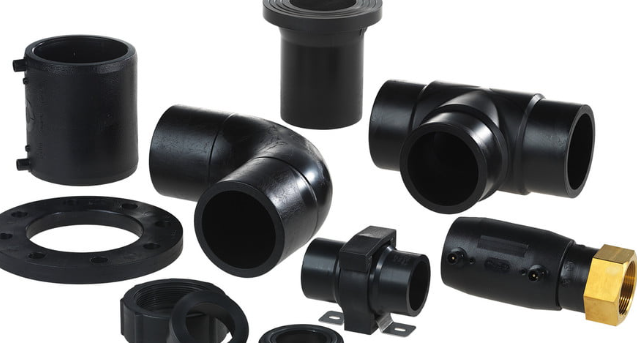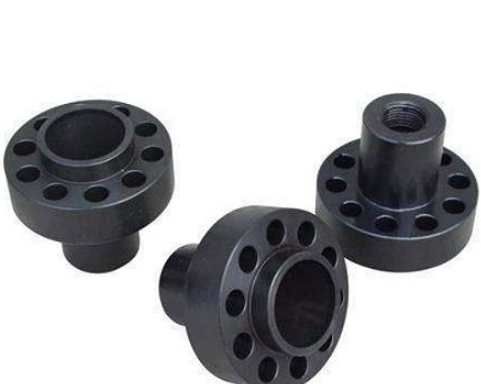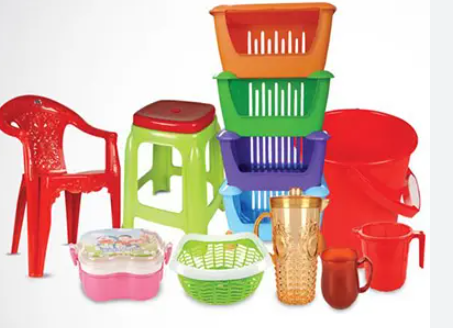Yes, HDPE can be injection molded, offering high strength, flexibility, and suitability for various applications.

Introduction to HDPE
High-density polyethylene (HDPE) is a thermoplastic polymer produced from the monomer ethylene. Renowned for its high strength-to-density ratio, HDPE is a versatile material widely used in various applications. It’s created through either a slurry process, gas phase process, or a solution process, each method contributing to distinct molecular weights and branching structures. HDPE is known for its large strength component, resistance to impact, and ability to withstand high temperatures.
Properties of HDPE
HDPE’s properties make it an ideal material for many applications. Key characteristics include:
- Density and Strength: Typically, HDPE has a density of 0.941 to 0.965 g/cm³. It’s known for its tensile strength, which can vary but generally falls in the range of 26-33 MPa.
- Chemical Resistance: HDPE is highly resistant to most acids, alcohols, bases, and esters, making it suitable for containers holding household chemicals.
- Thermal Properties: It can withstand temperatures up to 120°C for short periods and continuous use at 90°C. When exposed to lower temperatures, it maintains ductility and impact resistance.
- Electrical Insulating Properties: Due to its high resistivity, HDPE is used in electrical and telecommunications applications.
- Durability: HDPE is known for its long lifespan, often exceeding 50 years in buried pipe applications.
Common Uses of HDPE
HDPE’s versatility is evident in its wide range of applications:
- Packaging: Used in bottles for milk, juice, water, and laundry products due to its strength, stiffness, and barrier properties.
- Piping Systems: Applied in water, natural gas, and sewage systems for its leak resistance and durability.
- Consumer Goods: Found in items like cutting boards, toys, and containers for its safety and strength.
- Geotextiles: Employed in landscape and construction projects for its strength and resistance to environmental factors.
- Automotive Applications: Utilized in fuel tanks and other components, capitalizing on its impact resistance and lightweight nature.
Basics of Injection Molding
Injection molding is a manufacturing process used for producing parts by injecting molten material into a mold. It is a key process in the mass production of plastic parts and is notable for its versatility in size and shape of the manufactured parts. The process involves heating plastic pellets until they melt and then injecting the molten plastic into a mold where it cools and solidifies into the final part.
Overview of Injection Molding Process
The injection molding process consists of several key stages:
- Material Preparation: Plastic pellets are loaded into the injection molding machine and heated until they reach a molten state.
- Injection: The molten plastic is injected into a mold cavity under high pressure.
- Cooling: The plastic cools and solidifies in the mold, taking the shape of the mold cavity.
- Ejection: The solidified part is ejected from the mold.
The cycle time, which can range from seconds to minutes, depends on the size and complexity of the part, as well as the material used. This process allows for high production rates and repeatable high tolerances. For more information, the Wikipedia page on Injection Molding provides a comprehensive overview.
Key Components in Injection Molding
The primary components of an injection molding machine include:
- Hopper: Where the plastic pellets are loaded and fed into the barrel.
- Heating Barrel: Equipped with heaters and a rotating screw, it melts and mixes the plastic.
- Screw: Feeds the molten plastic towards the mold.
- Mold: A custom-made part that shapes the molten plastic into the desired form. Molds are typically made from steel or aluminum and can be quite complex, depending on the part geometry.
- Clamping Unit: Holds the mold closed under pressure during the injection and cooling.
https://www.youtube.com/watch?v=a7zl31hpAWM&pp=ygUcY2FuIGhkcGUgYmUgaW5qZWN0aW9uIG1vbGRlZA%3D%3D
HDPE in Injection Molding
High-density polyethylene (HDPE) stands out as a popular choice in injection molding due to its unique properties and versatility. This section explores its suitability for injection molding, the advantages of using HDPE, and key considerations in its processing.
Suitability of HDPE for Injection Molding
HDPE’s molecular structure makes it ideal for injection molding. It has a high strength-to-density ratio, ensuring durability and lightweight in the final product. HDPE also exhibits significant chemical resistance, making it suitable for products that need to withstand harsh substances. Additionally, its low moisture absorption rate ensures stability in various environments.
Advantages of Using HDPE in Injection Molding
HDPE offers several benefits in injection molding:
- Durability: Products made from HDPE are robust, impact-resistant, and can withstand rigorous use.
- Flexibility in Design: HDPE’s versatility allows for creating complex shapes and sizes in injection molding.
- Cost-Effectiveness: It is relatively inexpensive compared to other materials, making it a cost-effective option for large-scale production.
- Recyclability: HDPE is fully recyclable, aligning with sustainable manufacturing practices.
Processing HDPE in Injection Molding
Processing HDPE in injection molding involves several critical steps and parameters to ensure the quality of the final product.
Preparing HDPE for Injection Molding
The preparation of HDPE involves drying the pellets to remove any moisture, which is crucial to prevent defects in the final product. The typical drying temperature for HDPE is around 80°C for 2-4 hours.
Injection Molding Parameters for HDPE
Key parameters for molding HDPE include:
- Melt Temperature: Generally ranges between 200°C and 280°C.
- Mold Temperature: Kept between 20°C and 50°C to achieve optimal crystallinity and mechanical properties.
- Injection Speed: High injection speeds are preferable for uniform filling of the mold.
- Clamping Pressure: Needs to be sufficient to keep the mold closed against the high pressures of the injected molten HDPE.
Troubleshooting Common Issues
Common issues in HDPE injection molding and their solutions include:
- Warping: Caused by uneven cooling. Solution: Optimize cooling system and mold temperature.
- Sink Marks: Occur due to insufficient cooling or packing. Solution: Adjust holding time and pressure.
- Short Shots: Caused by inadequate material flow. Solution: Increase melt temperature or injection speed.

Design Considerations for HDPE Products
When designing products using high-density polyethylene (HDPE), several key factors play a crucial role. These factors include ensuring strength and flexibility, as well as considering aesthetic elements, which are vital for the product’s functionality and appeal.
Designing for Strength and Flexibility
HDPE’s unique properties, such as its high strength-to-density ratio, impact resistance, and flexibility, make it an ideal material for various applications. In designing for strength and flexibility:
- Wall Thickness: Uniform wall thickness ensures even cooling and reduces warping. For HDPE, a typical wall thickness might range from 1.2 mm for small, less stressed components to 5 mm for larger parts.
- Rib Design: Ribs should be about 60% of the adjoining wall thickness to provide strength without causing surface defects.
- Corner Transitions: Rounded corners reduce stress concentrations and improve flow during molding.
- Gating Location and Size: Proper gating ensures optimal flow of the HDPE within the mold, impacting the strength and quality of the final product.
Aesthetic Considerations in HDPE Molding
Aesthetics are also a key consideration in HDPE product design:
- Surface Finish: HDPE can achieve various surface finishes, from high gloss to matte, affecting the product’s look and feel.
- Color: HDPE takes color well, allowing for a wide range of color options. Consistent color mixing is important to ensure uniformity across production.
- Texture: Texturing can enhance grip or reduce the visibility of minor surface imperfections.

Environmental Aspects of HDPE
High-density polyethylene (HDPE) is a widely used plastic with significant environmental aspects, especially concerning recycling and sustainability. Understanding these aspects is crucial for industries aiming to minimize their environmental footprint.
Recycling and Sustainability of HDPE
HDPE is one of the most recyclable types of plastic. Key points in its recycling and sustainability include:
- Recycling Process: HDPE recycling involves collecting, cleaning, and reprocessing the plastic into new products. This process helps reduce plastic waste and consumption of raw materials.
- Recyclability Rate: HDPE boasts a high recyclability rate. For instance, HDPE milk jugs have a recycling rate of about 30% in the United States.
- Applications of Recycled HDPE: Recycled HDPE finds use in manufacturing non-food containers, plastic lumber, garden furniture, and pipes.
Environmental Impact of Injection Molding with HDPE
The environmental impact of injection molding using HDPE includes aspects such as energy consumption and emissions:
- Energy Efficiency: Modern injection molding machines are more energy-efficient, significantly reducing the environmental impact. For example, electric injection molding machines can reduce energy consumption by up to 70% compared to hydraulic machines.
- Emissions: The production of HDPE and its injection molding process emits greenhouse gases. However, advancements in technology are steadily reducing these emissions.
- Waste Reduction: Efficient design and production processes minimize waste generation in HDPE injection molding. The use of regrind (recycled HDPE) in the production process also contributes to waste reduction.




